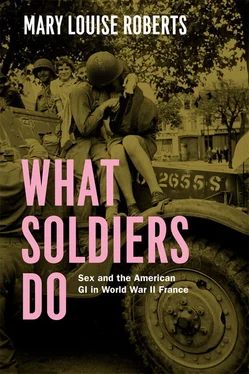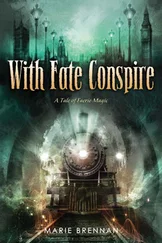38 SCRBC, LLP, 1.1 Corr., letter dated 24 December 1944.
39 On interracial hostilities of this type in England, see NARA, RG 338, Records of US Army Operational, Tactical and Support Organizations, V Corps Adjutant General Section, Central Decimal File, 1940–45 (hereafter RG 338), Box 14, reports dated 18 and 22 May 1944; Samuel Stouffer et al., The American Soldier: Adjustment during Army Life , 2 vols. (Princeton, NJ: Princeton University Press, 1949), 1:544–50; Lawrence Cane, Fighting Fascism in Europe: The World War II Letters of an American Veteran of the Spanish Civil War (New York: Fordham University Press, 2003), 64. In the secondary literature, see Smith, When Jim Crow , 150, 188–89; Lee, Employment of Black Troops , 440; Wynn, The Afro-American , 29; Christopher Paul Moore, Fighting for America: Black Soldiers, the Unsung Heroes of World War II (New York: Ballantine Books, 2005), 173.
40 SCRBC, LLP, 1.1 Corr., letter dated 24 December 1944.
41 William Weaver, Yankee Doodle Dandy (Ann Arbor, MI: Edwards Press, 1958), 216–19; and see also George H. Roeder Jr., The Censored War: American Visual Experience during World War II (New Haven, CT: Yale University Press, 1993), 56–57.
42 For African American soldiers in combat roles, see Alexander Bielakowski, African American Troops in World War II (Oxford: Osprey Publishing, 2007); Charles Sasser, Patton’s Panthers: The African American 761st Tank Battalion in World War II (New York: Pocket, 2005); Kareem Abdul-Jabbar, Brothers-in-Arms: The Epic Story of the 761st Tank Battalion (New York: Broadway Books, 2005); Morehouse, Fighting in the Jim Crow Army , 160; Paul Goodman, A Fragment of Victory in Italy: The 92nd Infantry Division in World War II (Nashville, TN: Battery Press, 1993).
43 Wynn, Afro-American , 35–36; Mary Motley, The Invisible Soldier: The Experience of the Black Soldier, World War II (Detroit, MI: Wayne State University Press, 1975).
44 SCRBC, Alan Morrison Papers, “Negro Service Troops Overseas,” unpublished ms., nd, 12–18. Morrison was the first black reporter for Stars and Stripes in the ETO.
45 Morehouse, Jim Crow Army , 4; Lee, Employment of Negro Troops , 348–79, 437.
46 L’Occupation et la Libération de Saint-Clair-Sur-Elle: témoignages de ses habitants (Saint-Lô: Ateliers Beuzelin/Esnouf, 1984), np.
47 For a clear explanation of how ComZ functioned, see Steven R. Waddell, “The Communications Zone (ComZ): American Logistics in France” (PhD thesis, Texas A&M, 1992).
48 For the liberation of Cherbourg and its function as a major supply port, see Robert Lerouvillois, Et la liberté vint de Cherbourg: la bataille logistique de la Libération (Cherbourg: Isoète, 1987); and André Picquenot, Cherbourg sous l’Occupation (Rennes: Éditions Ouest-France, 1983), 95–96.
49 For statistics, see NARA, RG 498, Box 27, “Offenses by Colored Soldiers.” For the provost marshal’s remarks, see ibid., “Recapitulation of Major Crimes.”
50 Lee, Employment of Negro Troops , 631.
51 SCRBC, Alan Morrison Papers, “Negro Service Troops Overseas,” 14.
52 Régine Torrent, La France américaine: controverses de la Libération (Brussels: Éditions Racine, 2004), 236.
53 Ernie Pyle, Brave Men (New York: Henry Holt, 1944), 318.
54 US Military History Institute, Carlisle Barracks (hereafter MHI), World War Two Veterans Survey (hereafter WWII Survey), Box 18th Infantry Division, Warren E. Eames survey.
55 These concerns are voiced in Twelfth Army Group, Final After-Action Report , 10:28.
56 NARA, RG 498, Box 27, “Offenses by Colored Soldiers” dated 22 August 1944.
57 Hodes, White Women, Black Men , 2. See also John D’Emilio and Estelle B. Freedman, Intimate Matters: A History of Sexuality in America (New York: Harper and Row, 1988), 297, where the authors remark that between 1930 and 1964, 90 percent of men executed for rape were African American.
58 SCRBC, Committee against Jim Crow in Military Service and Training, Sc MG98, Folder 2.
59 Ambrose, “Blacks in the Army,” 183; NARA, RG 338, XV Corps Subject Files, 1942–46, Box 75 (hereafter Box 75), “Report of Investigation Concerning Alleged Cases of Rape Occurring at Closfontaine, France, on 31 August and 2 September 1944” (hereafter “Report”), 12–13.
60 Archives Départmentales de la Manche (hereafter ADM), Rapports américains, 13 num (hereafter 13 num), 3045. The “13 num” series is a collection of SHAEF Intelligence reports from Normandy that were photographed by ADM personnel at the NARA for their own archives.
61 NARA, RG 498, Box 27, memo dated 24 October 1944. In the French archives, see ADC, 21 W 15/2, Rapports mensuels du préfet: documents préparatoires de synthèse, 1944, reports dated 16 December 1944, 3 February and 1 March 1945.
62 US Army Judiciary, Arlington, Virginia, (hereafter USAJ), CMC 3740, James B. Sanders, Florine Wilson, and Roy W. Anderson, 5; and ibid., CMC 3933, George Ferguson and Henry Rorie, 3, 6.
63 NARA, RG 498, Box 27, “Recapitulation of Major Crimes.”
64 HOBR, CMC 4172, 11:53–63.
65 HOBR, CMC 8270, 19:161–69.
66 In order to explore the rape accusations in France during the period 1944–45, I looked at seventy-six summaries of court cases described in HOBR by the reviewing judges of the JAG office. These were cases in which the accused was tried for rape, attempted rape, or rape and murder. From these cases, I requested, pursuant to the Freedom of Information Act, fifteen records of court-martial trials from the US Army. I chose cases that appeared to have unanswered questions concerning evidence, the identification of the accused, and/or the credibility of the accuser. Because the sample is biased toward “problem” cases, I don’t claim it to be representative. The large majority of these cases fell into the period July–October 1944, when the first rape wave was said to occur. To learn how the rape accusations were handled by the French authorities, I read police and prefect reports in Le Havre (AMH, FC H4 15–6); in Saint-Lô (ADM, Séries 3 U, Justice, Fonds du Tribunal de première instance de Cherbourg, procès-verbal [hereafter Séries 3 U]); in Caen (ADC, Cabinet du préfet, 9 W 52–55 Police); and Reims (Archives Départmentales de la Marne [hereafter ADMar], 8 U 180, 196–97.)
67 See US War Department, A Manual for Courts-Martial (Washington, DC: Army, Judge Advocate General’s Department, 1943).
68 Frederick Bernays Wiener, Military Justice for the Field Soldier (Washington, DC: Infantry Field Journal, 1943), 25. Wiener’s book was meant as a more comprehensible field guide to accompany A Manual for Courts-Martial . See also John A. McComsey and Morris O. Edwards, The Soldier and the Law (Harrisburg, PA: Military Service Publishing Co., 1941).
69 USAJ, CMC 3858, Arthur E. Davis and Charles H. Jordan. The legal limit of time between formal charge and trial was five days, except in cases of military necessity. In the review of the case by the judge advocate general’s office, the judges acknowledged the brief period between the formal charge and trial, but they argued “it appears that there has been substantial compliance in that ample opportunity was afforded for the preparation of their defense.” The two men had for their defense counsel a field officer and a captain in the JAG Office. Neither counsel appeared to be a lawyer. The two soldiers were executed on 22 November 1944.
70 USAJ, CMC 4775, Wilford Teton and Arthur Farrell.
71 USAJ, CMC 3691, Eugene Houston; CMC 2740, Sanders, Wilson, Anderson; CMC 3750, Leonard Bell. See also CMC, 4589, Edward Powell, Andrew Clay, Ebbie Sweet, and J. B. Ketchum.
Читать дальше












